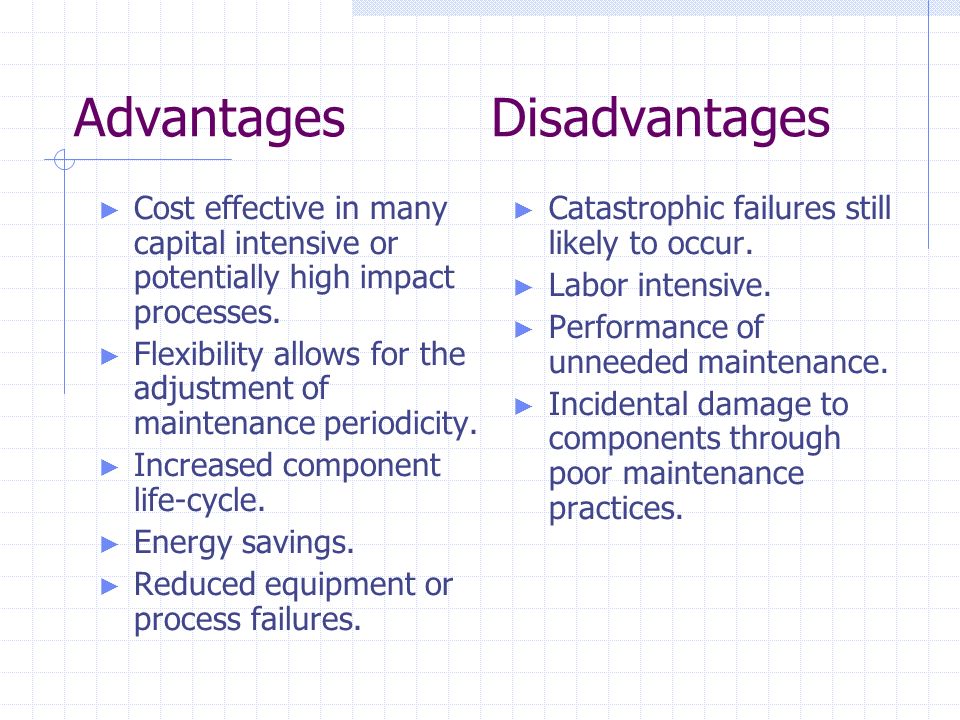Over the years, maintenance has become one of the most important factors an organization or industry must accomplish. Learning and performing maintenance is a very broad topic all technological organizations must look into to keep organization and equipment in good working condition.

The technical meaning of maintenance involves functional checks, servicing, repairing, or replacing industrial items. This item might include devices, equipment, machinery, building infrastructure, etc.
Today we’ll be looking at the definitions, types, advantages, and disadvantages of maintenance in technical fields that utilize machinery.
Contents
What is maintenance?
Maintenance in this scenario is referred to as Maintenance, repair, and overhaul (MRO) which is also referred to as Maintenance, repair, and operations. The implementation of this maintenance and MRO has begun to become standardized. The following stated below is the definition of maintenance assigned by the United States Department and Defense:
- They defined it as any activity such as tests, measurements, replacements, adjustments, and repairs intended to retain or restore a functional unit in or to a specified state in can perform its required functions.
- They also stated maintenance to be all action taken to retain material in a serviceable condition or to restore it to serviceability. It includes inspections, testing, servicing, classification as to serviceability, repair, rebuilding, and reclamation.
- Maintenance can also be defined as all supply and repair actions taken to keep a force in condition to carry out its mission.
- And finally, maintenance is a routine recurring work required to keep a facility (plant, building, structure, ground facility, utility system, and other real property) in such condition that may be continuously used, at its original or designed capacity and efficiency for its intended purpose.
Applications
In woodworking and metalworking organization that utilizes machine tools and other facilities for production, maintenance is strictly connected to the utilization stage of the product or technical system. This means the concept of maintainability must be included.
In this case, maintainability is considered as the ability of an item, under stated conditions of use, to be retained in or restored to a state making it perform its required functions, using the set down prescribed procedures and resources. All industries must implement the MRO standards to keep those things in perfect position.
Apart from the metalworking and woodworking field that sees the implementation of maintenance as a key purpose other areas such as the marine and air transportation, offshore structures, industrial plant, and facility management industries. They all depend on maintenance, repair, and overhaul (MRO).
Types of Maintenance
The following stated below represent the basic types of maintenance that fall under the MRO:
- Preventive maintenance
- Corrective maintenance
- Predictive maintenance
Preventive Maintenance:
Preventive maintenance is abbreviated as PM. It is a routine for repeated inspection with the goal of noticing minor problems and fixing them before the major ones develop. In this situation, the machine or equipment is in good condition, nothing breaks down.
The main purpose of preventive maintenance is for the equipment to make it from one planned service to the next planned service. This helps to avoid failures caused by fatigue, neglect, or normal wear which are preventable items. Planned maintenance and Condition Maintenance help to achieve this by replacing worn components before they actually fail.
Corrective Maintenance:
The corrective type of maintenance is carried out after the complete breakdown or malfunction of equipment. It tends to be expensive because there are multiple damages apart from the worn parts. Serious repair and replacement costs and loss of revenues due to downtime during overhaul can be meaningful.
Corrective maintenance also includes the rebuilding and resurfacing of equipment and infrastructure damaged by erosion and corrosion. Some conventional processes like welding and metal flame spraying, as well as engineered solutions with thermoset polymeric material, will also be performed.
Predictive Maintenance:
Predictive maintenance is more advanced in sensing and computing technology. It uses the maintenance strategy to monitor key parameters within a system or machine. It uses the data with the analyzed historical trends to continuously evaluate the system’s health and also predict a breakdown before it happens. The predictive type of maintenance tends to be more efficient due to the fact that more up-to-date data is collected about the machine issues.
Advantages and disadvantages of maintenance

The following are the advantages and disadvantages of maintenance according to the United States Department and Defense.
Related Article:
- Understanding overall equipment effectiveness
- Understanding extrusion process
- Understanding plant maintenance
- Everything about Construction survey
- Understanding Total productive maintenance (TPM)
So, that’s all for this article, in which we were able to look into the definitions, types, advantages, and disadvantages of maintenance in technical fields that utilize machinery. Hope you learn a lot. If so, kindly share it with others. Thanks for reading; see you around!

Leave a Reply